Model-turned-Farmer Tinu Verghis takes us through her life filled with the rhythms of the earth at The Art Farm in Goa.
◊ By Bhumika K
Visit ORGANIC SHOP by Pure & Eco India
She has worked as a famous fashion model for 15 years in India and abroad, with 1,500 runway shows to her credit. In India, she was the showstopper for every major Indian designer at the time, like Manish Malhotra, Rohit Bal, Manish Arora, etc. Internationally, she has worked with Christian Lacroix, Alexander McQueen, and Givenchy. In 2003, she was declared the ‘World’s Best Ramp Model’ by Fashion TV, Monte Carlo.
But at the peak of her career, in 2012, Tinu Verghis abruptly quit the world of fashion in favour of an arts education, and then family and farming. Now, she has married the two—art and farming—at her farmstead, The Art Farm.
To many of us her life will seem like Utopia – she lives on her 1-acre farm in Tiswadi, Goa, looks gorgeous standing in muddy water while harvesting paddy with her family. Her two children, Lucien and Zazie, gorge on fruits they pluck from the trees, and have geese, ducks and hens as friends.
Just a few weeks ago, she was “cooking up art” in Serbia, with beans and rice grown on her farm. “I invited local viewers to cook with me while we discussed the commonalities of our experiences with food and the issues of climate change and the drastic need to return to consuming fresh food, balcony gardening and freedom from processed food,” says Verghis.
Kerala-born Verghis bought a farmhouse in Goa 16 years ago, while she was still modelling; the house came with agricultural land. “I love Goa for its idyllic vibes and its connectivity to Bombay, where I was working as a model. It felt natural to start planting rice and seasonal vegetables from the very first year,” she says. “I come from a family that is deeply rooted in agriculture. My mother could grow anything. She was always collecting and saving seeds. There were always newspaper pouches of dried seeds on the kitchen table and we almost always ate the fresh veggies she grew. She would send me with a plastic bag to forage wild leafy edible plants on my way back from school,” recalls Verghis of the beginnings of her tryst with farming.
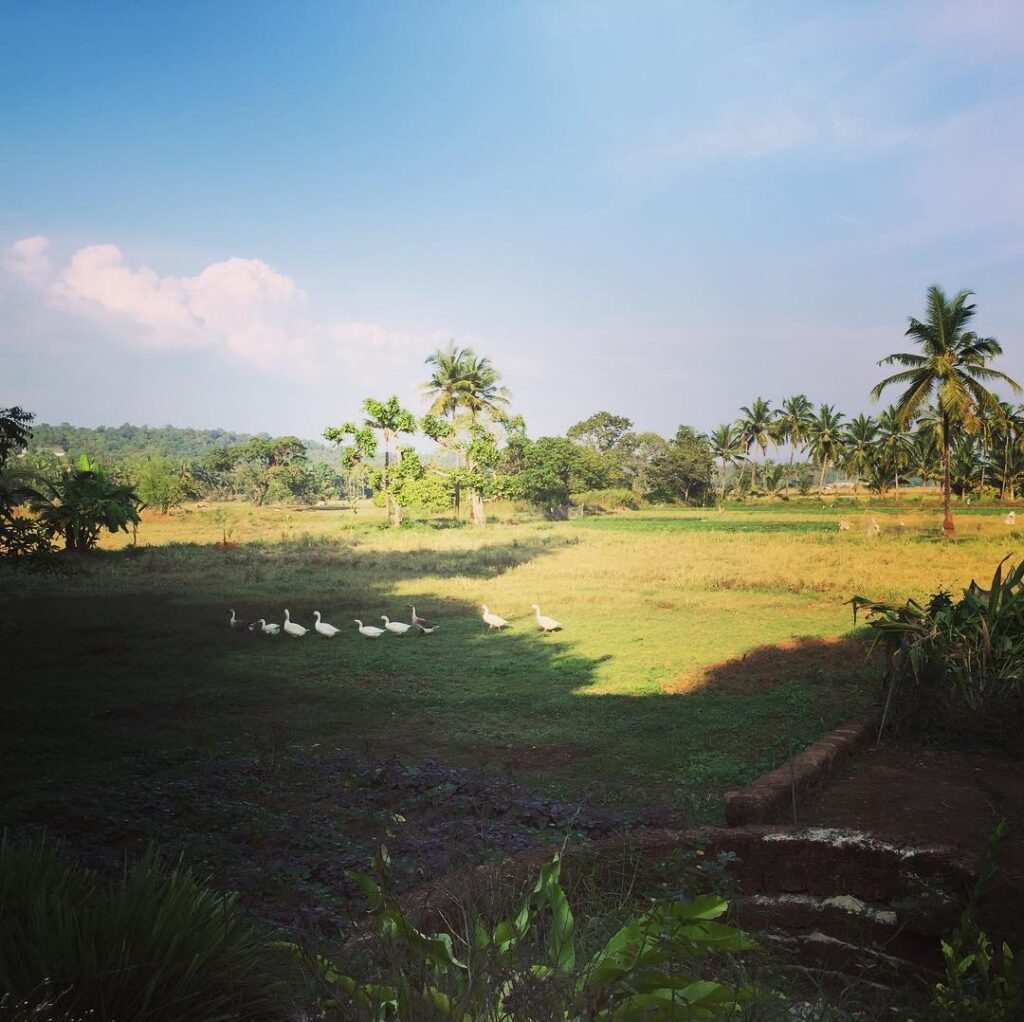
Just another day at The Art Farm, Goa
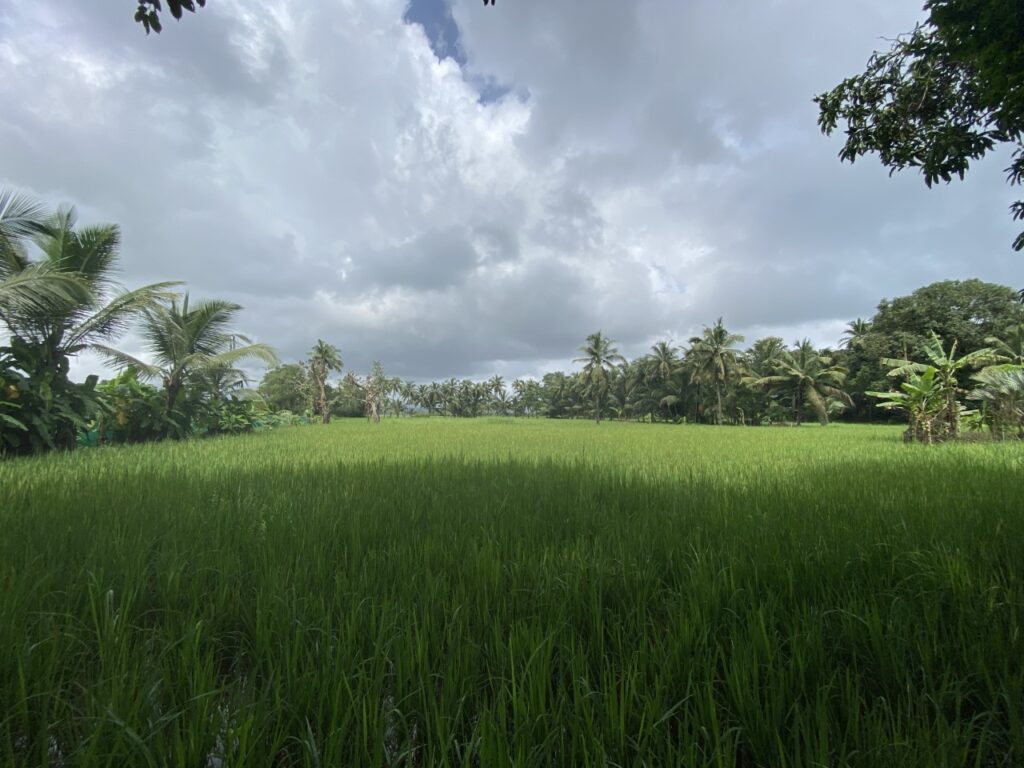
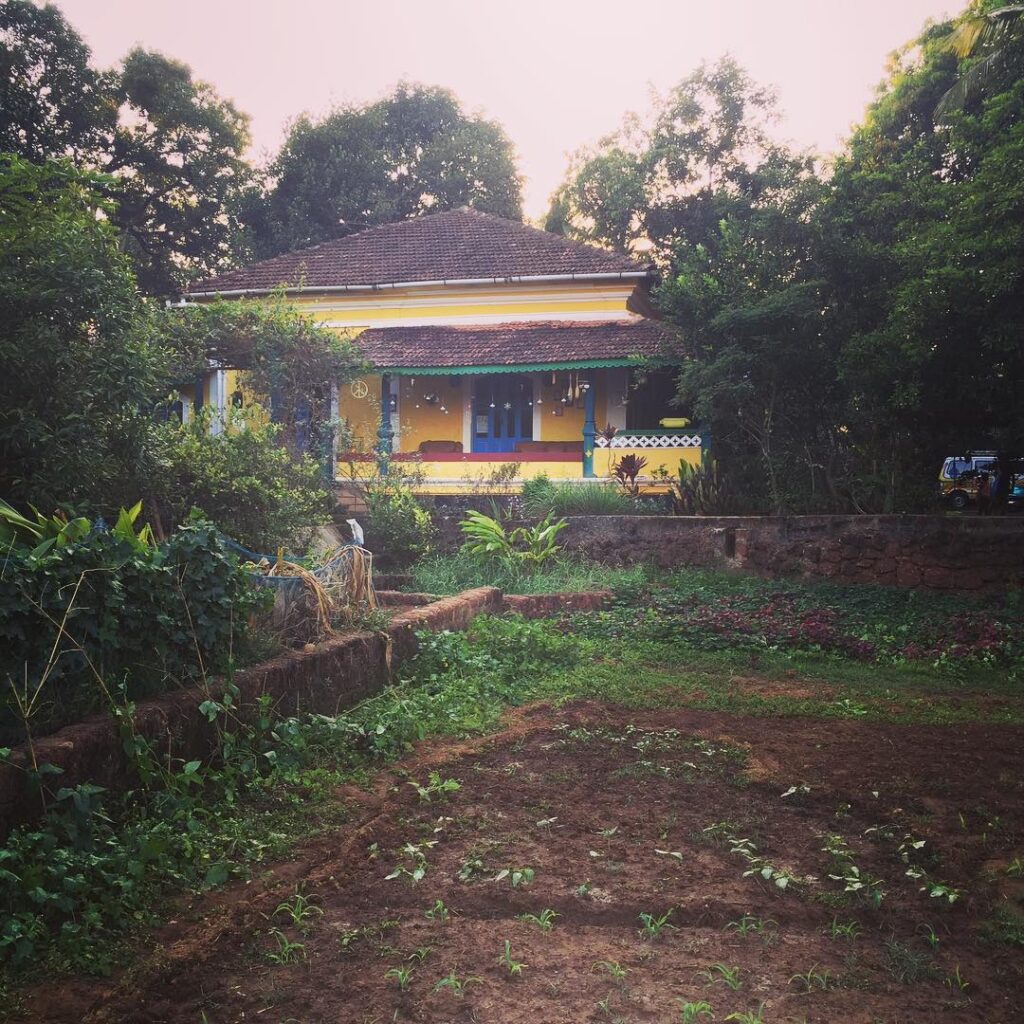
The homestead
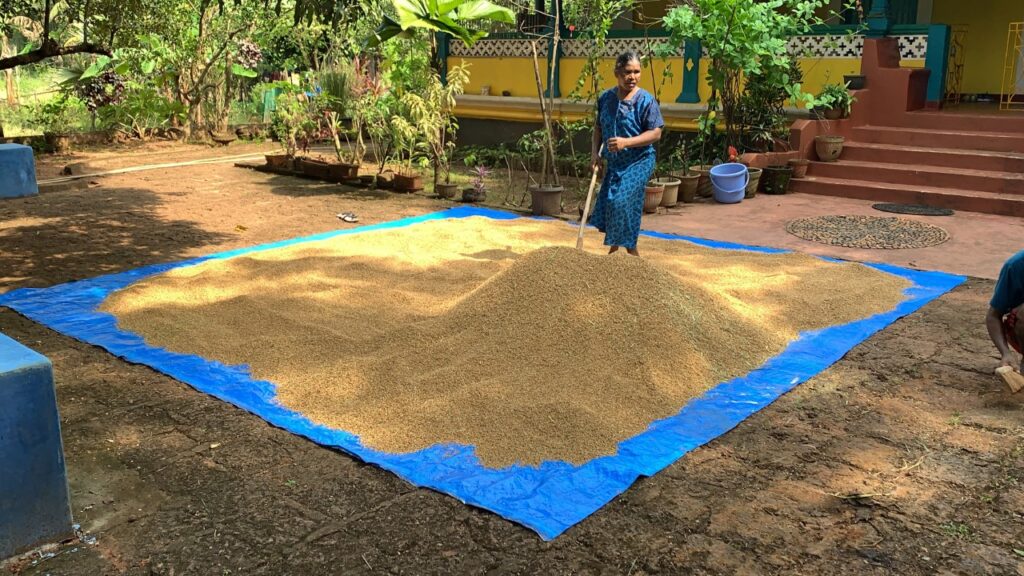
Verghis never sells her produce. She says, “I barter or give it to friends and family. It is not possible for me to fix a price on food that is grown with so much love and energy. The capitalistic model of exchange of goods for money would be reductionism; it dismisses my contribution towards the sustainable practice of growing food and sharing it with others.”
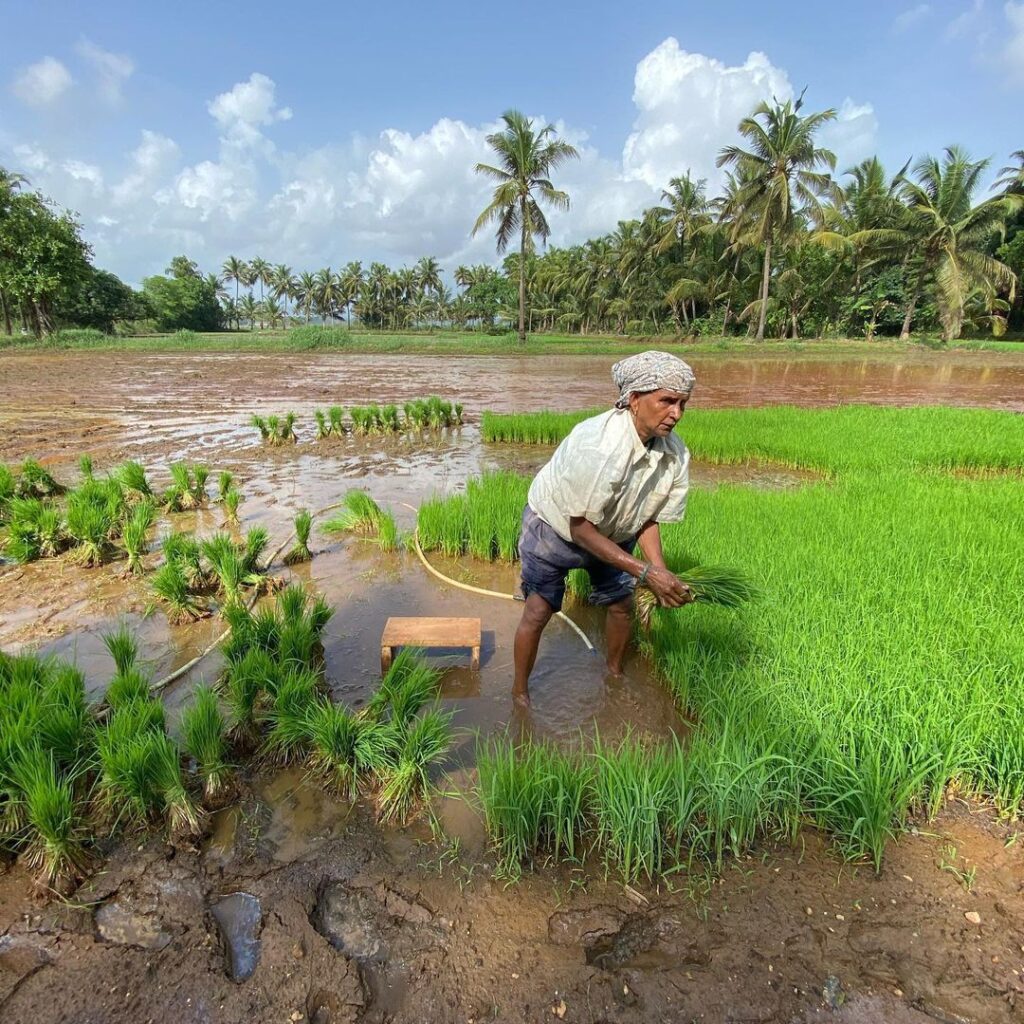
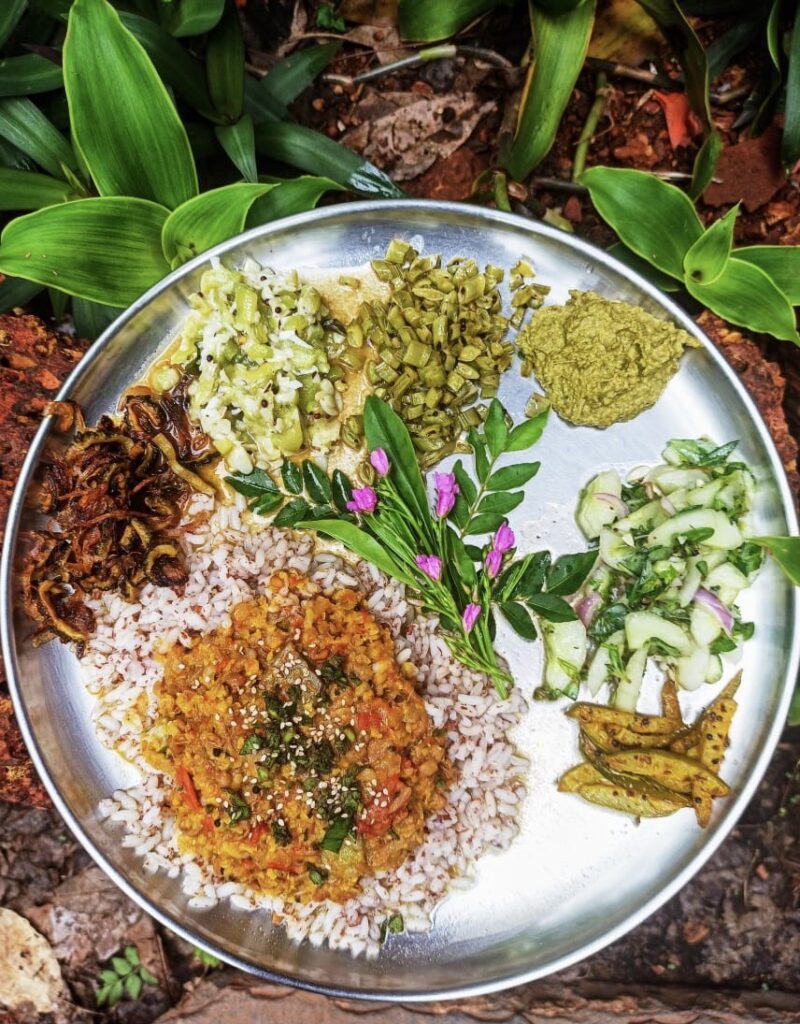
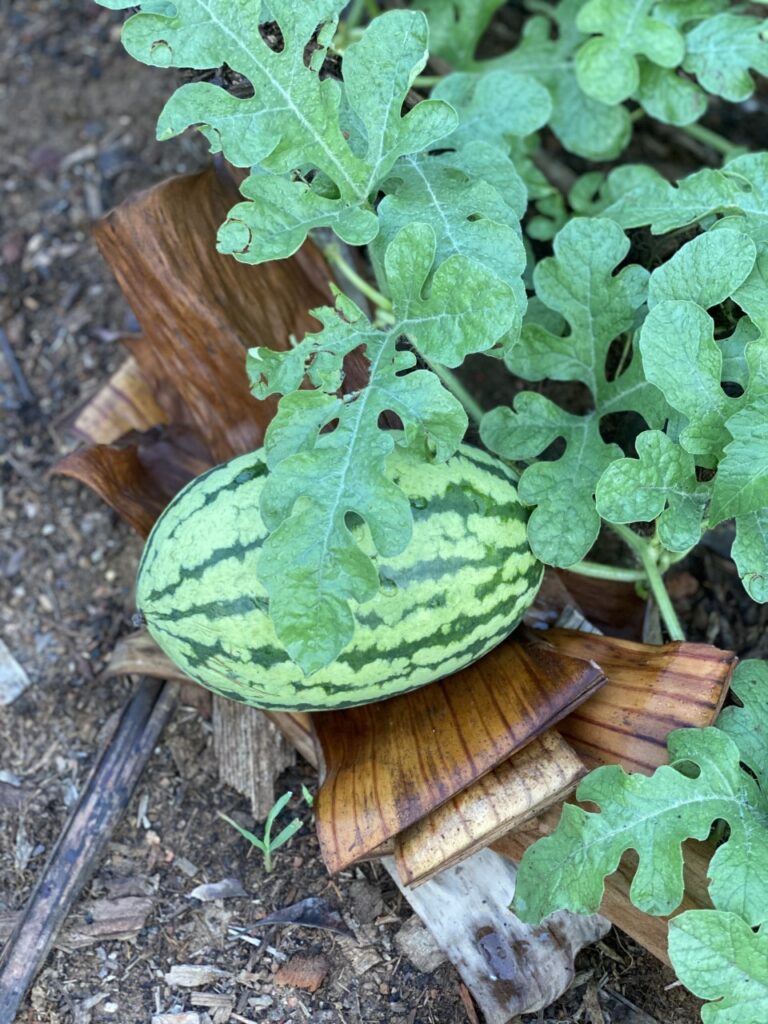
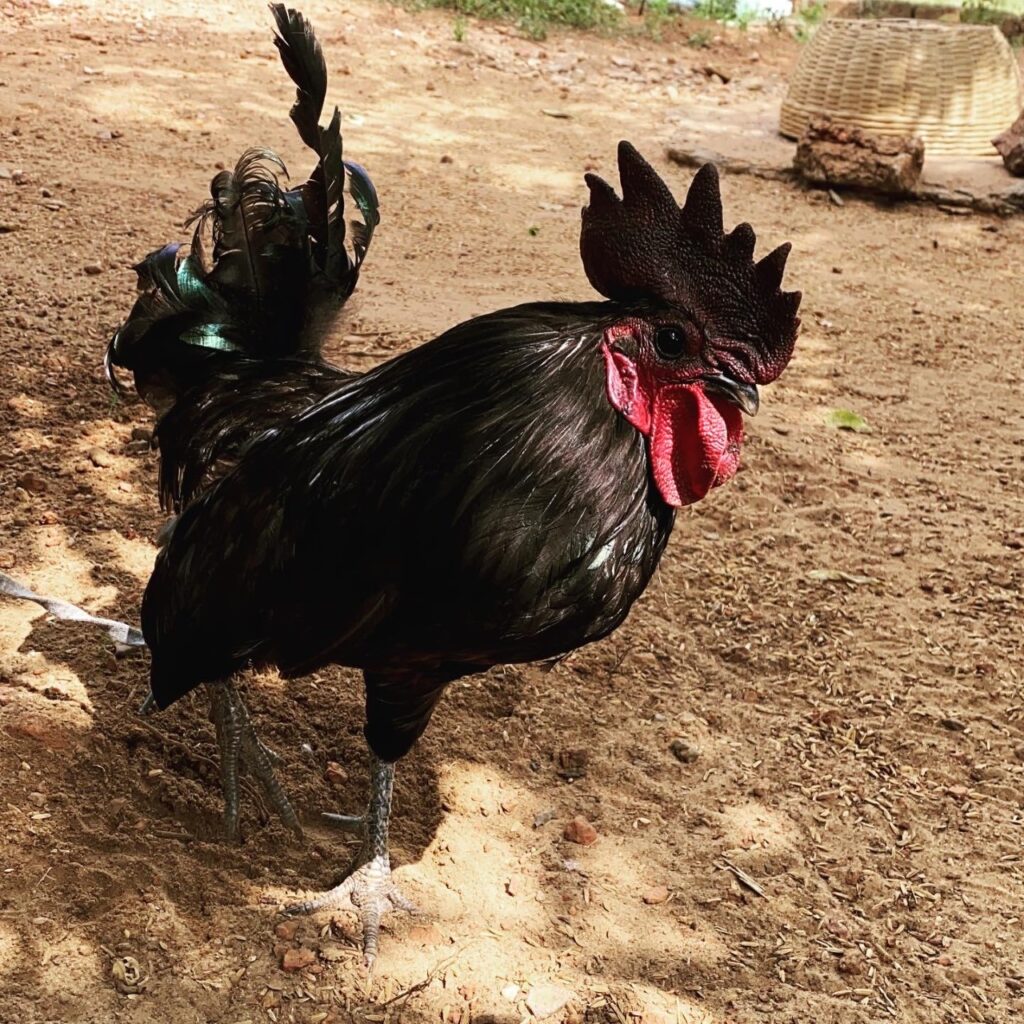
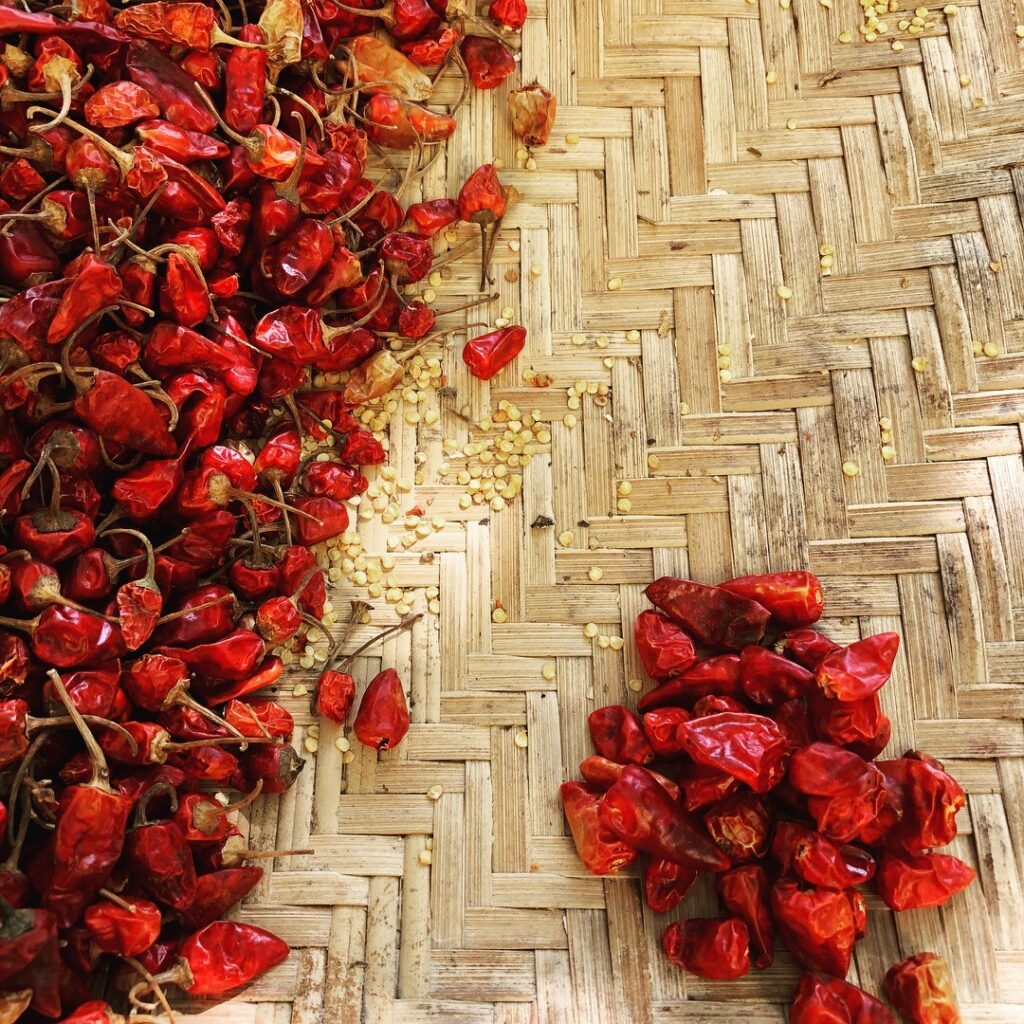
She recalls growing up seeing chilli, okra, melons, moringa, yam, ivy gourd, etc, grow abundantly all year round, and “banana trees lined up as walls, and pineapple bushes were the divider fence”.
Her mother was an encyclopedia of traditional knowledge. “No book could teach me what I learnt from her. She taught me to be patient with plants, to look at plants and recognise their needs. She taught me to use vegetables, even if they were half eaten by insects and worms. She taught me never to waste food. She made the simplest of foods with very few ingredients. We ate to live and not the other way,” says Verghis.
Her mother would show her how seeds had to be placed in the soil – knowing how every seed has a top and a bottom is an important skill. It’s this knowledge absorbed from her mother that she applies on her farm today. “We collect and save seeds and plant them according to the rise and fall of the moon. I have been collecting seeds and saving them from all my travels around the world. It is so deeply rooted in me,” she reiterates.

Back in the day. Tinu Verghis (centre); Image source: www.magazinecanteen.com
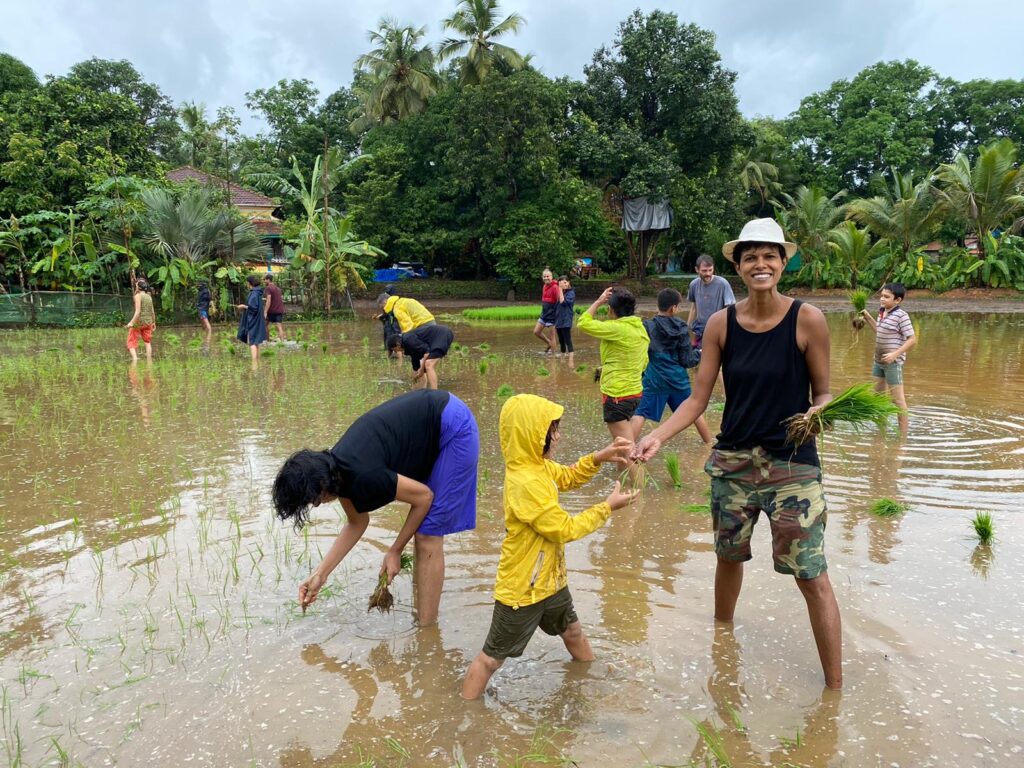
At the experiential camp, about 30 kids aged 6-15 years visit The Art Farm with their parents and plant rice
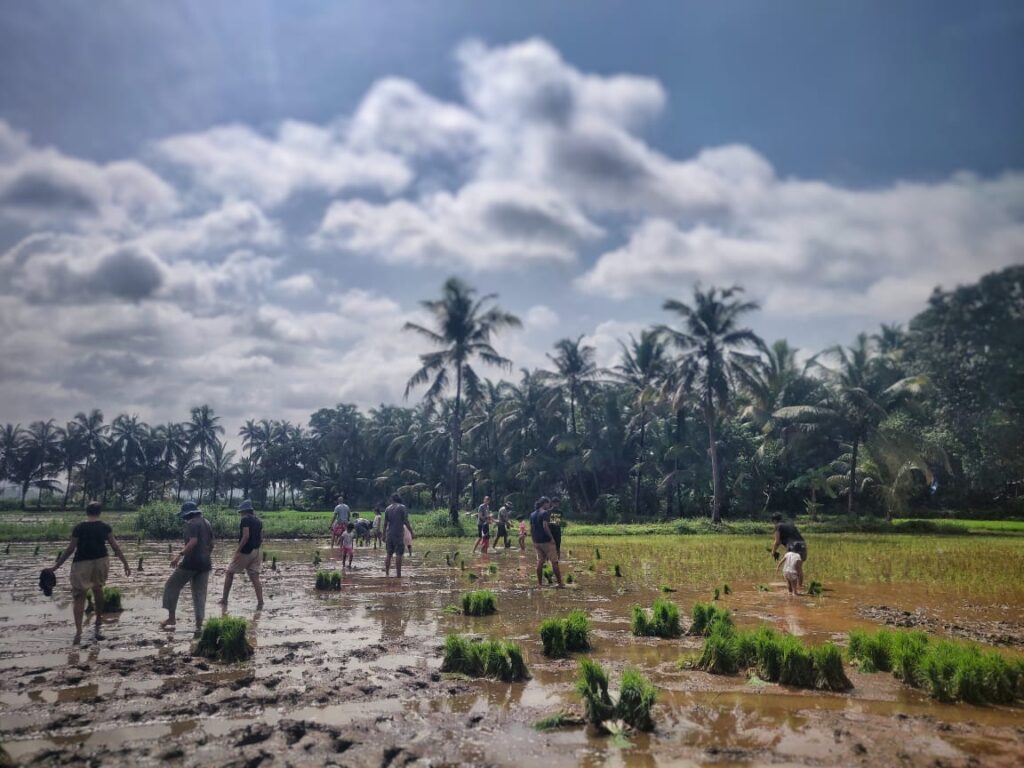
“Experiential learning creates deeper empathy for food in kids. They make better choices in their eating habits if they are part of the process of growing their own food.” – Tinu Verghis
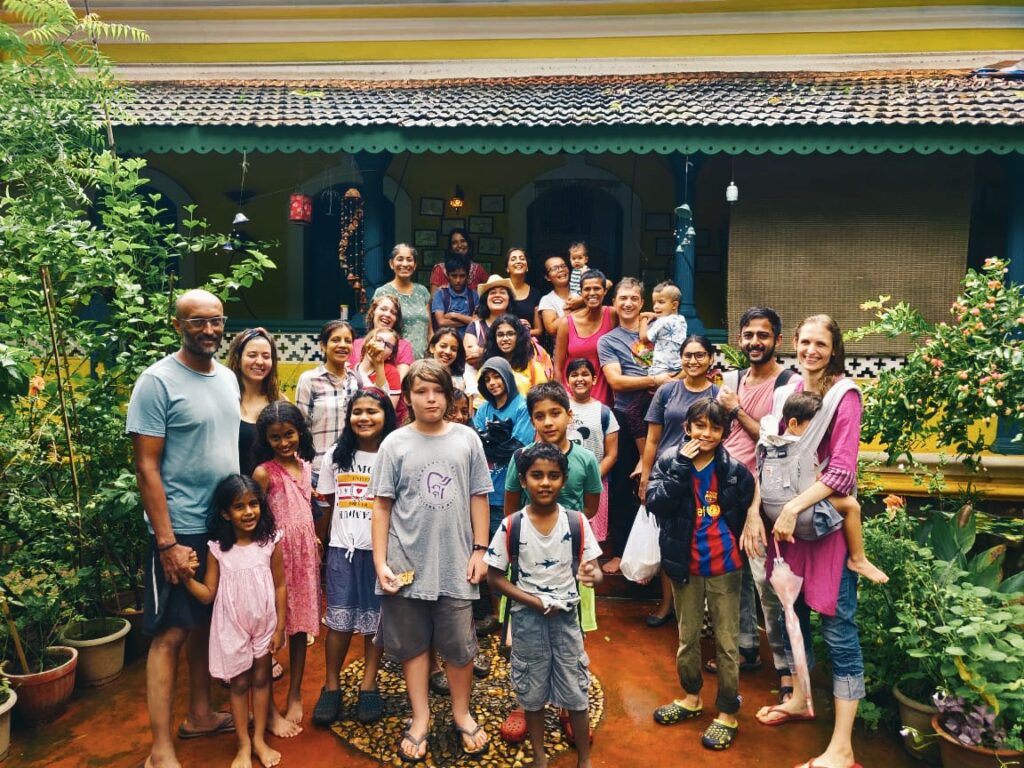
The ex-model, a certified farmer (by the Directorate of Agriculture in Goa), grows a large variety of crops. She gives a detailed account of what she grows on her farm, and when: She prepares the bed for the rice saplings in May; transplants the rice saplings in July; harvests rice in November. In December, she plants corn, sweet potato, radish, peanuts, brinjal, chillies, amaranth, alsande beans, knolkhol, melons, okra, bottle gourd, etc. In June, turmeric and ginger are planted. She also grows vetiver, bananas, ivy gourd, pineapple, cherry, litchi, mango, avocado, guava, mulberry, starfruit, lime, calamansi, pomelo, passion fruit and lololikka in her kitchen garden.
In spite of the bounty, Verghis never sells her produce. She says, “I barter or give it to friends and family. It is not possible for me to fix a price on food that is grown with so much love and energy. I would rather give it away than sell it. The capitalistic model of exchange of goods for money would be reductionism; it dismisses my contribution towards the sustainable practice of growing food and sharing it with others.”
Is her farm organic? “I reap a yearly harvest of 1 tonne of rice. I use organic means to cultivate and I use the inputs from the land to mulch and I use the excrement of my farm animals for fertilising. I have not looked for labels to categorise my farm. I am not into those models of capitalism. I don’t sell so they are just useless labels to me. But I don’t use chemicals and fertilisers on my land. So it is organic all the way,” she says.
THE ART FARM
Verghis quit modelling to pursue her post-graduation in visual arts at the LASALLE College of The Arts in Singapore. From this deep interest in exploring art and finding connections through art to build stories that reflect the lives of women, The Art Farm was born. “The Art Farm offers people the opportunity to not just come into nature and be one with nature but to strengthen themselves through transdisciplinary art practices and community development practices,” says Verghis.
“I am charged with the ideas of women’s emancipation. I am finding a way to fuse farming and art to talk about topics that are an intrinsic part of our daily lives. Art is a democratic way to challenge systems of oppression. The open-ended way I infuse farming and art allows the viewer to interpret it with their own life experiences,” she elaborates on the concept behind The Art Farm.
LIFE ON THE FARM
While Verghis does miss her glamour-filled modelling days, they are firmly behind her. She is happiest in Goa among the plants, birds, insects and reptiles that have become a part of her life over the last 16 years. “I have two kids now and I am managing a farm, my artistic pursuits and my yogic journey. All of which keeps me busy. Now, I wish I had more hours in the day. I am not very modern in my approach. I am old school,” she confesses.
She’s equipping her children with practical life skills. “They know their land well. They can climb trees, stare into the deep well without falling in, pluck fruits that are edible and ripe, spot birds, snakes and other wild beings. They can sense danger,” Verghis describes life at the farm.
The children’s activities flow naturally into the farm and home – they feed the farm animals in the morning, collect eggs; they fetch tender curry leaves when their mother is cooking. “But they haven’t yet learned to break a coconut. That is a very important step to being a Malayali farmer!” jokes Verghis.
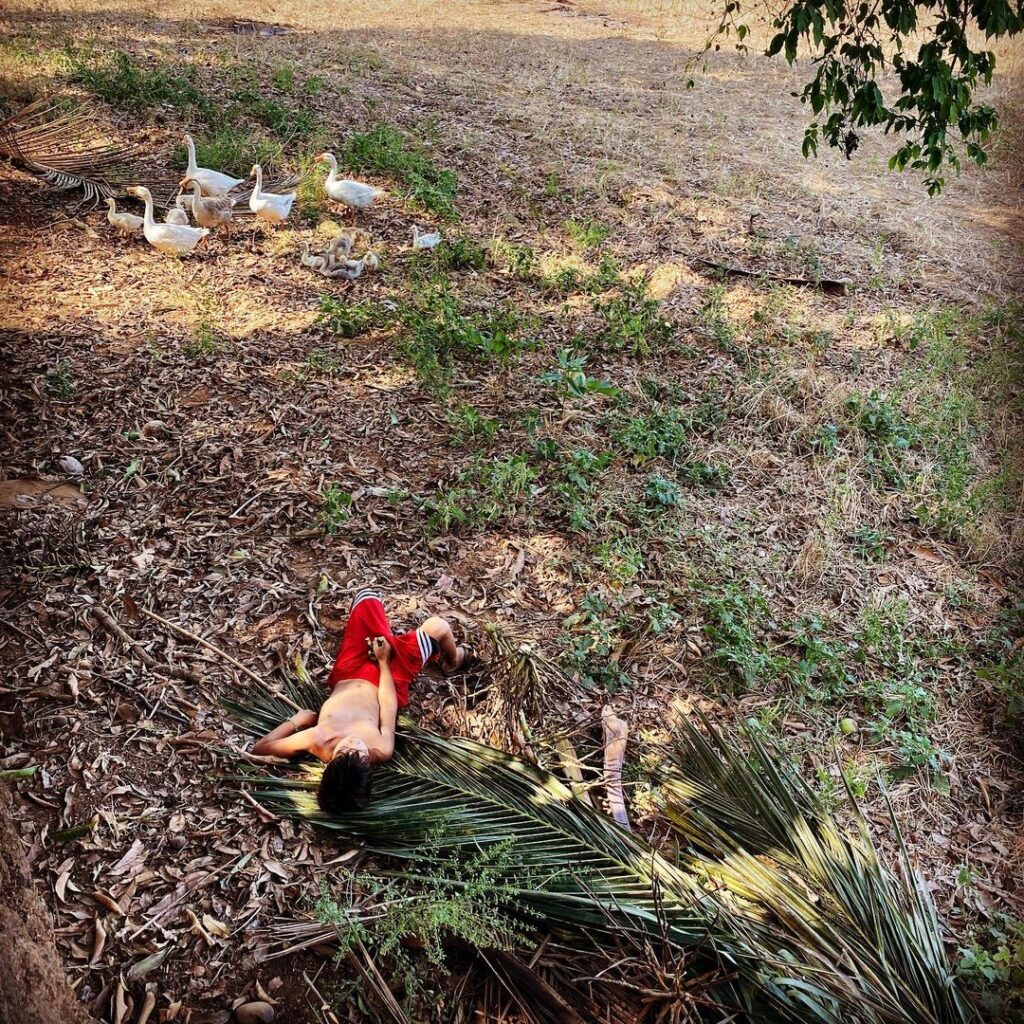
An idyllic childhood
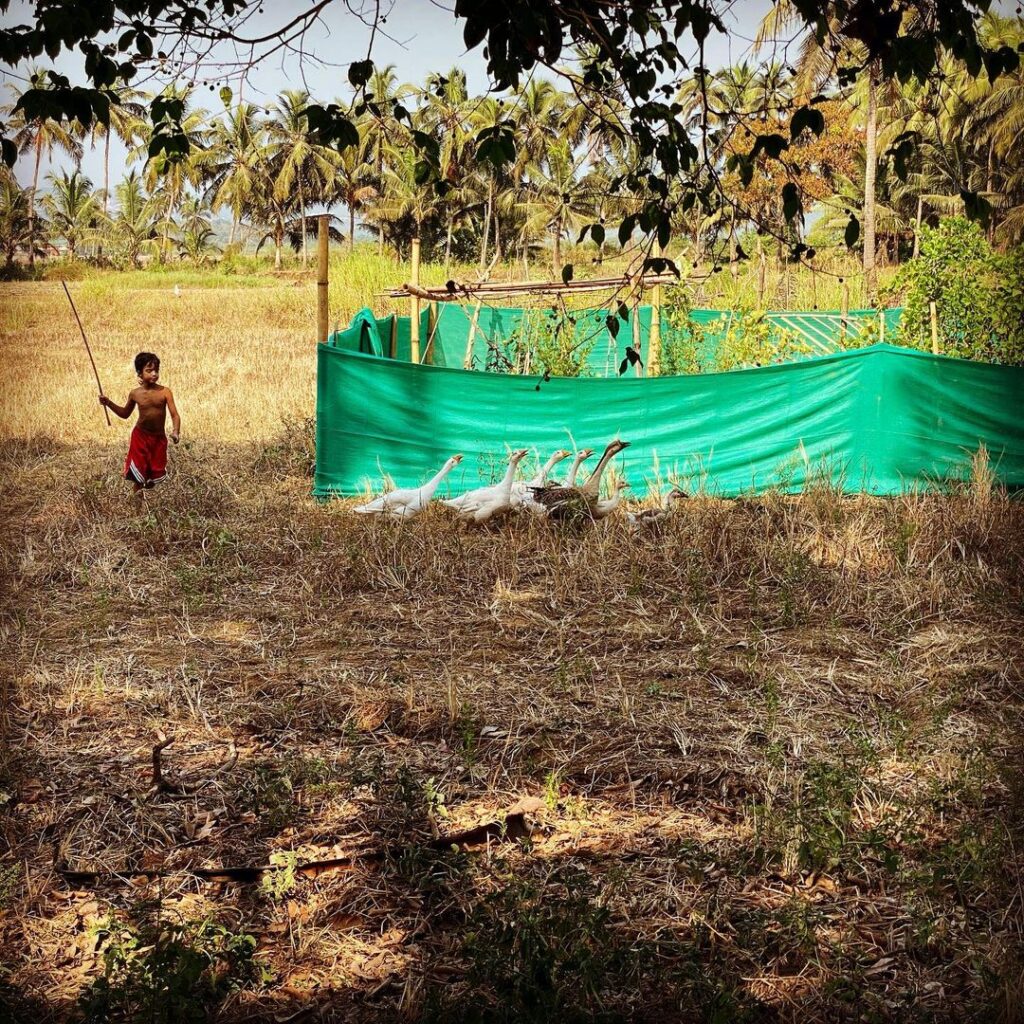
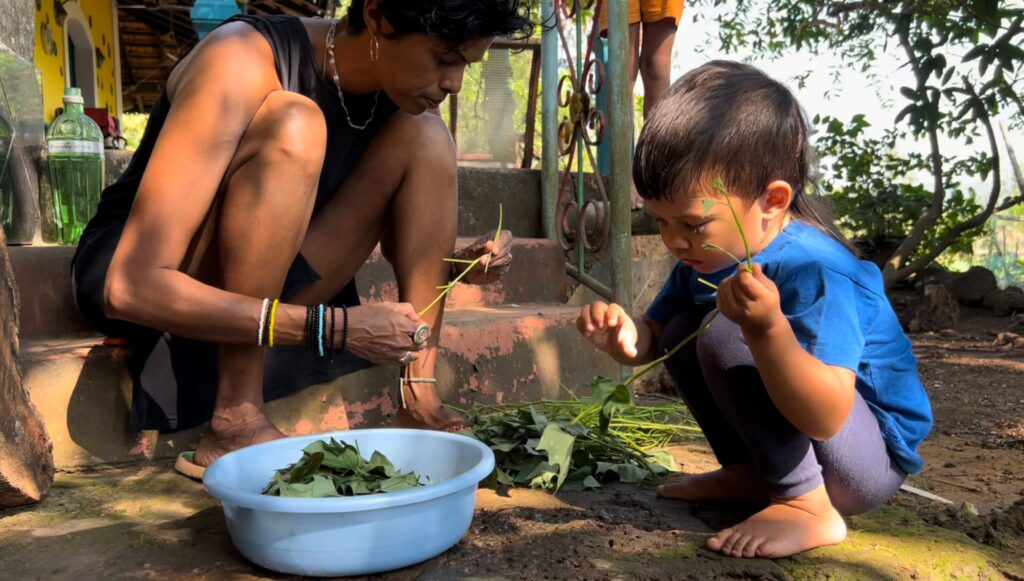
Verghis is equipping her children with practical life skills. “They know their land well. They can climb trees, stare into the deep well without falling in, pluck fruits that are edible and ripe, spot birds, snakes and other wild beings. They can sense danger.” Photo by Shankar Venkataraman
The family’s diet is mostly rice-based. Verghis’ partner, Quentin Staes-Polet, loves the tempura of young vegetables. “I cook not just the mature vegetables, but even their tender leaves, shoots and sometimes roots. One of my favourites is Vazhapindi Pachadi. When we cut the banana, we cut down the mother tree. In the middle of the banana tree is the tender pindi. You will never find it in the market. It’s absolutely delicious when cooked with coconut and cumin seeds,” she shares.
TEACHING CHILDREN HOW TO FARM
Verghis has also introduced a novel concept for kids. Children from the nearby TLC – The Learning Centre in Moira (an informal learning space) and her own kids go through the experiential learning process of transplanting rice. “I believe that experiential learning creates deeper empathy for food in kids. They make better choices in their eating habits if they are part of the process of growing their own food,” Verghis stresses.
On a typical day at this experiential camp, about 30 kids aged 6-15 years visit The Art Farm with their parents and plant rice. They are often ankle deep in muddy water. The children are briefed about the width and depth of the saplings and how they need to be planted. When they go out into the field, they have fun mucking around and they plant “freestyle”. Verghis approves: “They don’t plant in lines or grids nor optimize the space and I quite enjoy their anarchist style. Surprisingly, I always have a bumper crop. I have come to believe that children have magic in their hands. When we harvest the rice in November, they all get their share of the rice!” she beams.


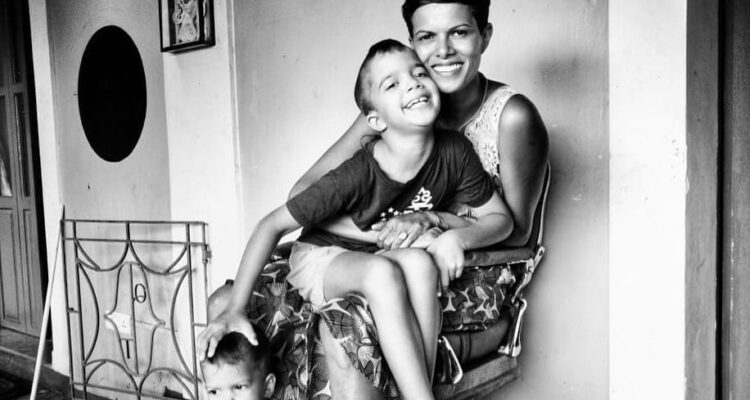
Leave a Reply